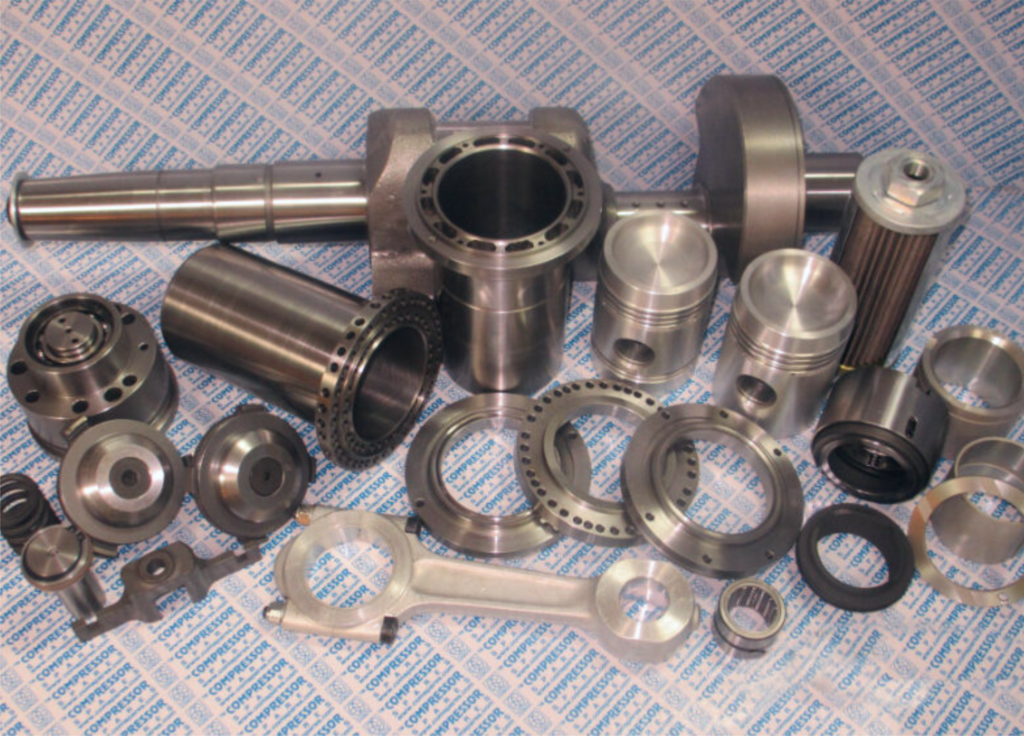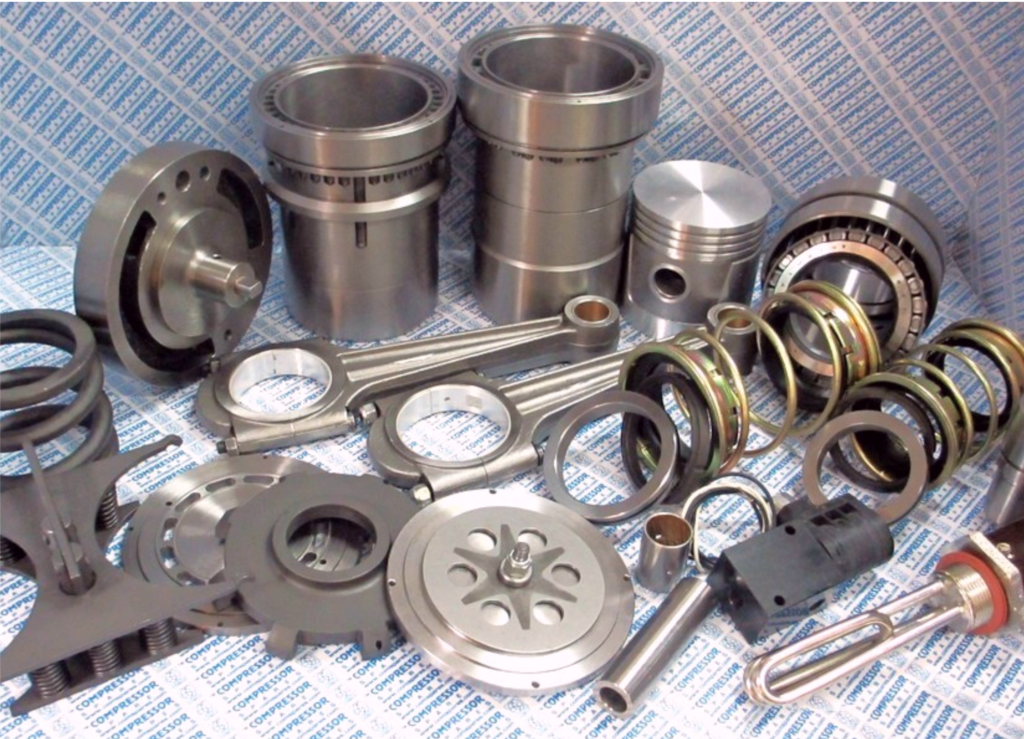We manufacture high-precision, after-market ammonia compressor spare parts for popular refrigeration and air-conditioning compressors. We can also manufacture spare parts as per your custom design specifications.
Click through the below links to see more details on the specific make…
A compressor is a mechanical device that increases the pressure of a gas by reducing its volume. In the refrigerant cycle, ammonia gas undergoes compression through the application of the compressor. This causes the gas to heat up under pressurization. The gas moves into the condenser where heat is dissipated in the coils. This condenses the ammonia, changing it into liquid form, but still at high pressure.
Ammonia has a good volumetric cooling capacity and is a very effective refrigerant due to a heat of vaporization of 1368 kJ/kg. Only a small amount of ammonia needs to be moved in the system – approx. 13 to 15 percent compared to fluorocarbons, to generate a high refrigeration capacity.
This makes NH3 very economical. Ammonia was one of the first substances used in the refrigeration industry before a synthetic refrigerant known as chlorofluorocarbon (CFC) replaced it in the 1920s. Ammonia is a naturally occurring gas composed of nitrogen and hydrogen, and it is classified as a natural refrigerant. Ammonia is the most environmentally friendly refrigerant.
It belongs to the group of so called “natural” refrigerants, and it has both GWP (Global Warming Potential) and ODP (Ozone Depletion Potential) equal to zero. Ammonia is used in wastewater treatment, leather, rubber, paper, food and beverage industries. It also is used in cold storage, refrigeration systems and in the production of pharmaceuticals. Ammonia is used in the printing as well as cosmetics industries. It is also used in fermentation.
The compressor of an ammonia refrigerating machine has a volumetric efficiency of 85% and swept volume of 0.28 m3/min. Ammonia refrigeration is most commonly used in facilities that have large-scale refrigeration systems such as food and beverage manufacturing facilities, cold storage warehouses, combined cycle power plants, and petrochemical facilities.
Rotary Screw, Vane and Reciprocating type compressors are the three most common types of air positive displacement compressors found in small and medium sized industries.
Centrifugal compressors rely on the kinetic energy of rotating impellers to compress gases. They are often used in large-scale ammonia synthesis plants due to their high capacity and efficiency.




